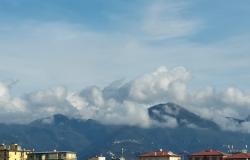When in Rome…Eat Cacio e Pepe
ITA:

Use player to listen to Italian version
Cacio e pepe is a bit like the Colosseum: it wouldn’t be Rome without it.
As with many iconic Italian dishes, dozens of versions have developed from the original over time, each claiming to be the best, or, as a Roman would say, er mejo.
So what is the original cacio e pepe and how did it originate?
Cacio e pepe has its roots in the semi-nomadic life of shepherds who practiced transhumance. When shepherds left for the traditional, twice yearly migration of livestock from the highlands to the lowlands, and back, they filled their sacks with pecorino cheese, a bag of black pepper and a good amount of dried spaghetti prepared by hand with water, salt and flour. Why these ingredients specifically? Black pepper stimulates heat receptors and helped shepherds to protect themselves from the cold; aged pecorino keeps for a long time and pasta guaranteed the right amount of carbohydrates and calories.
From pastures, the dish has spread to the Lazio countryside, to Abruzzo and Umbria’s mountains, and on to Roman trattorias.
Over the years, almost all types of pasta have been used with cacio e pepe, including rigatoni, tonnarelli, egg pasta, and, more recently, tagliolini and spaghetti alla chitarra, which, some say, help give more creaminess to the dish.
The secret of a well-executed cacio e pepe is both in the ingredients and in the cook's ability to prepare it. The combination of the ingredients must result in a creamy sauce, which is obtained by adding the right amount of water used to cook the pasta to the pecorino cheese to obtain a good texture. Many argue that the best way to achieve this is to finish cooking the dish in a pan. No oil, butter, or cream are allowed in the recipe.
La cacio e pepe è un po' come il Colosseo: Roma non sarebbe la stessa senza.
Come per molti piatti emblematici della tradizione italiana, nel corso del tempo si sono sviluppate decine di versioni, ognuna delle quali afferma di essere la migliore o, come direbbe un romano, er mejo.
Ma allora, qual è l'originale cacio e pepe e come è nata?
La cacio e pepe affonda le sue radici nella vita semi-nomade dei pastori che praticavano la transumanza. Quando i pastori partivano, due volte l'anno, per la tradizionale migrazione del bestiame dagli altopiani alle pianure e viceversa, riempivano le loro bisacce di formaggio pecorino, un sacchetto di pepe nero e una buona quantità di spaghetti secchi preparati a mano con acqua, sale e farina. Perché proprio questi ingredienti? Il pepe nero stimola i recettori del calore e perciò aiutava i pastori a proteggersi dal freddo; il pecorino stagionato si conservava a lungo e la pasta garantiva la giusta quantità di carboidrati e calorie.
Dai pascoli, il piatto si è diffuso nella campagna laziale, sulle montagne abruzzesi e umbre, e infine nelle trattorie romane.
Nel corso degli anni, quasi tutti i tipi di pasta sono stati utilizzati con la salsa cacio e pepe, inclusi i rigatoni, tonnarelli, pasta all'uovo e, più recentemente, tagliolini e spaghetti alla chitarra, che, alcuni dicono, aiutano a dare più cremosità al piatto.
Il segreto di una cacio e pepe ben riuscita sta sia negli ingredienti che nell’abilità del cuoco. La combinazione degli ingredienti deve risultare in una salsa cremosa, che si ottiene aggiungendo la giusta quantità di acqua di cottura al pecorino fino a raggiungere la giusta consistenza. Molti sostengono che il modo migliore per raggiungere questo obiettivo è quello di terminare la cottura in padella. Olio, burro e panna non sono ammessi nella ricetta.











